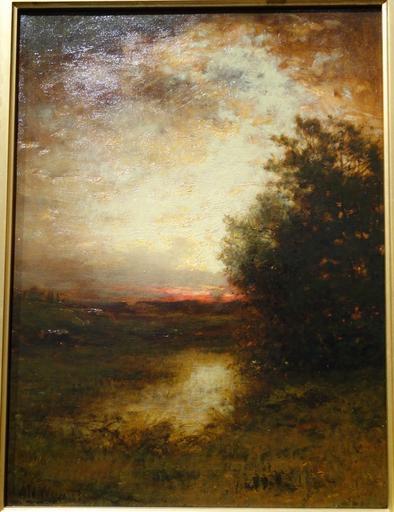Introduction
Wall art is much more than mere decoration; it's an essential element in crafting inviting environments that reflect personal style and enhance the atmosphere of a space. Whether you're looking to create a cozy nook or a vibrant living area, the right wall art can set the tone and bring life to your interiors. This article explores how wall art shapes inviting environments, offering practical tips, insights into visual storytelling, and ways to curate your personal sanctuary.
Interior Decor Inspiration: How Wall Art Shapes Inviting Environments
Understanding the Role of Wall Art in Interior Design
Wall art serves as a focal point in any room, guiding the viewer's eye and influencing the overall mood. From large canvas pieces that command attention to subtle aesthetic photos on a gallery wall, each piece contributes to the story of your space.
The Psychology Behind Colors in Wall Art
Colors evoke emotions. Warm tones like reds and oranges can energize a room, while cool blues and greens often promote calmness. Choosing artwork that aligns with the emotion you want to evoke is vital for transforming environments.
Creating Inviting Spaces with Art
To foster an inviting atmosphere, consider not just what you hang but how you display it. Layering various textures and materials can create depth. For example, pairing a sleek metal frame with textured canvases adds intrigue.
Visual Storytelling in Design
Every piece of wall art tells a story—whether it's abstract expressions or serene landscapes. It’s about creating a narrative that resonates with you and invites guests into your world.
Self-Expression Through Decor
Wall art is one of the most potent forms of self-expression. It's an opportunity to showcase your personality and interests. By curating personal spaces with art that reflects who you are, you create an environment that's uniquely yours.
Combining Colors and Textures for Impact
When selecting wall art, think about how colors interact with existing decor. A harmonious blend can tie different elements together, while contrasting textures can add vibrancy and character.
Modern vs. Traditional Styles: Finding Your Aesthetic
Whether you lean towards modern minimalism or traditional elegance, understanding these styles helps in selecting appropriate artwork. Mixing both can yield exciting results if done thoughtfully!
Large Canvas Hanging Tips for Maximum Effect
When hanging larger pieces, aim for eye-level placement for optimal impact—this creates balance in design elements throughout your space. Consider using multiple smaller pieces to form a cohesive gallery wall as well.
Wall Art Placement: The Golden Rules
Placement matters! Aim for symmetry when necessary but don’t shy away from asymmetry for added interest. Group artworks by theme or color palette for visual cohesion.
Transforming Environments with Strategic Design Choices
Strategic design http://newperspectives255.iamarrows.com/gallery-wall-inspiration-curating-your-own-collection-at-home choices elevate spaces from ordinary to extraordinary; consider using wall art as part of an overall theme or vibe you wish to convey in your home.
Curating Your Personal Sanctuary
Creating Zones Within Your Home Through Art
Different areas serve different purposes—art can help delineate zones within open floor plans, guiding flow through visual cues.
Using Art to Create Mood in Spaces
The right piece of art can influence how we feel when we enter a room. Darker hues might induce introspection while bright images encourage liveliness—think about this when choosing decor!
Reflection Through Interiors: The Importance of Personal Touches
Reflecting who you are through decor enhances comfort levels—add family photos or travel souvenirs alongside curated pieces for warmth and familiarity.
Balancing Functionality with Aesthetics in Home Decor
While aesthetics play an essential role, functionality cannot be overlooked; ensure that wall art complements rather than obstructs daily activities within each room.
FAQ Section
1. What types of wall art should I choose?
Choose based on personal preference! Consider your existing decor style and the emotions you'd like evoked within that space.
2. How do I determine the best size for wall art?
Consider the scale of furniture around it; larger walls may need bigger pieces while smaller spaces benefit from compact selections.
3. Can I mix different styles of artwork?
Absolutely! Mixing styles adds uniqueness but ensure there’s some common thread—like color or theme—to maintain harmony.
4. What is the best way to hang large canvas prints?
Hang them at eye level (around 57-60 inches from floor) for maximum effect; use sturdy hardware suitable for weight!
5. How often should I change my wall art?



6. What role does lighting play in displaying wall art?
Lighting enhances visibility! Use accent lights or natural light sources strategically positioned to highlight key pieces without causing glare.
Conclusion
Wall art truly shapes inviting environments by bridging personal expression with aesthetic appeal. From understanding color psychology to mastering placement techniques, every element plays its part in enhancing our spaces' charm and character. As you've seen throughout this exploration into interior decor inspiration: how wall art shapes inviting environments, every piece tells its story—and ultimately contributes significantly toward making your home feel like a true sanctuary tailored just for you!
With thoughtful curation and strategic design choices, creating spaces filled with warmth and personality becomes entirely possible! So go ahead; embrace your artistic side and transform those blank walls into canvases reflecting who you are at heart!